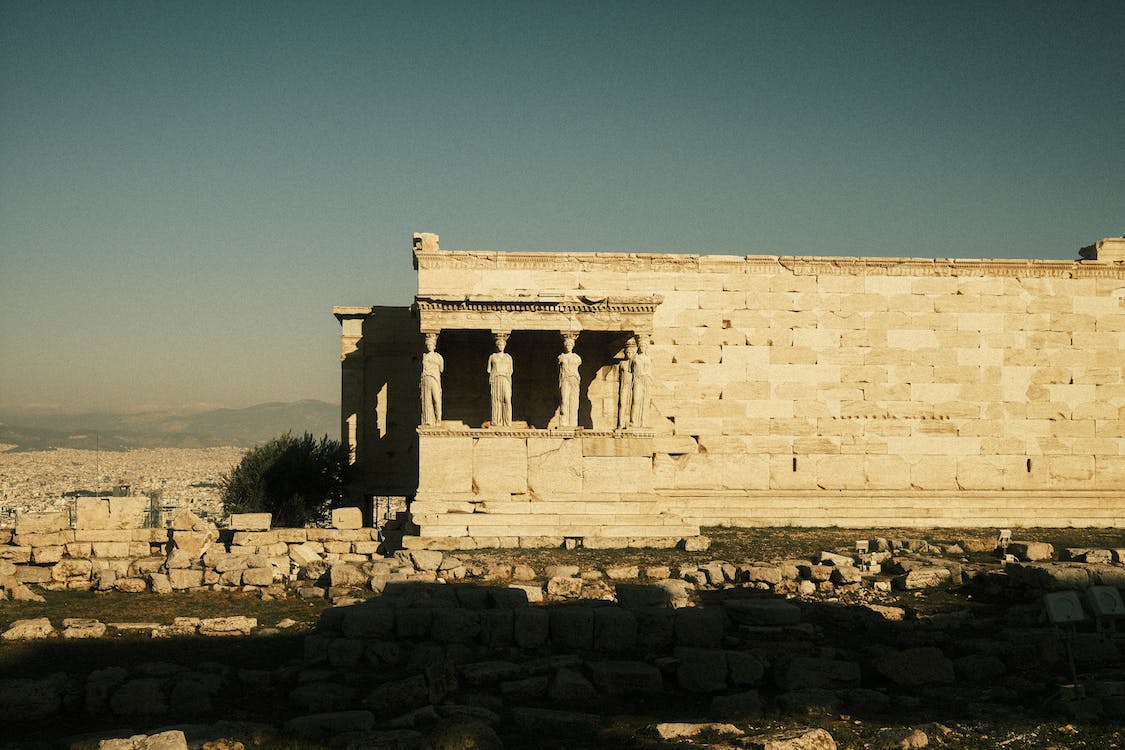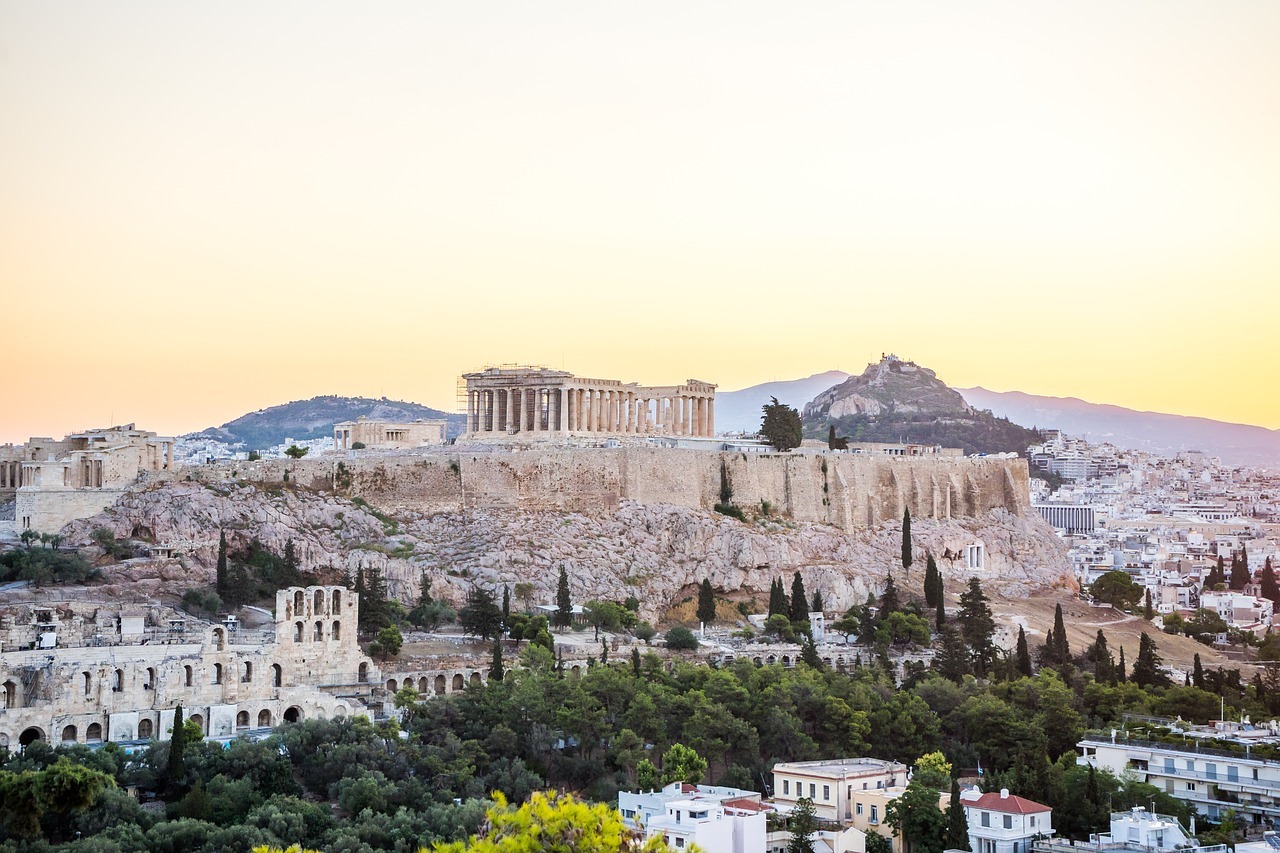Background
The Greek word “acropolis” (which translates to “high city”) can apply to any of the numerous fortresses built on rocky, higher territory throughout Greece, but the Acropolis of Athens is the most well-known. The Acropolis is a prehistoric settlement perched high above Athens, Greece, on a limestone hill. Over the years, the Acropolis served as a royal residence, a fortification, the mythical setting for the gods’ home, a place of worship, and a popular tourist destination. It continues to remain as a reminder of the lengthy history of Greece despite having weathered bombardment, enormous earthquakes, and vandalism. There are multiple temples there, the most well-known of which is the Parthenon, and it is now a cultural UNESCO World Heritage site.
The History of the Acropolis

Since it was first constructed in the fifth century BCE, the Acropolis has witnessed a great deal of history and has been influenced by numerous cultures. The structure that is visible now sits above the city of Athens. Here are a few glimmers of some of the occasions that have influenced the Athens Acropolis.
Since the Neolithic Age (7,000 BCE–5,000 BCE), people have lived in or near Athens. Athens expanded during the Bronze Age (3,300 BCE–1,200 BCE), which is roughly when Homer penned his epics. The Acropolis served as a royal residence and a treasure vault for a while, but its primary function was as a place of Athena worship. The Persian invaders inflicted damage on the Acropolis in 480 B.C.E., including on an early iteration of the Parthenon. The Athenians were successful in repelling the invasion and resisted Persian authority.
The Architecture of the Athenian Acropolis

There is proof that even very early Greeks utilized the Acropolis as a location to worship the goddess Athena, store gold, and lodge the ruler. Remains discovered in an ancient pit provide proof that sacrifices were undoubtedly offered to Athena there. Though the oldest structures were probably made of wood, they were modest and have since vanished.
The ancient Parthenon was destroyed and left in ruins by the Persian ruler Xerxes I in 480 BCE. The structures that are still standing now were all built in the fifth century B.C.E. and were technological marvels at the time. Most of these structures were significant because they served as sites for the worship of various facets of the goddess Athena.
The Parthenon
The Parthenon, the largest and most well-known structure on the Acropolis, was an engineering marvel in its day. To honor Athena, the virgin goddess of knowledge, the Parthenon was constructed. Marble had to be cut, hauled to the Acropolis, molded, and put into place before the edifice could be constructed. The scale of the temple is the Parthenon’s most striking feature. Ancient Greece had never before tried such a structure. In reality, the columns are tilted to better support the weight of the ceiling, but the ancient architects intended for the tilt to be barely perceptible to a visitor. The Parthenon’s enormous roof is supported by extremely tall columns. A huge golden statue of Athena, who was seen as a strong lady in ancient times, was once housed inside the Parthenon.
The Erechtheion
The smaller Erechtheion temple, which was finished between 421 and 406 BCE, was immensely significant to the ancient Athenians and served as the focal point for the majority of their religious rites. The porch of this little temple featured lovely columns with maiden-like carvings. The mythical first king of Athens, who was also said to be Athena’s adoptive son, inspired the temple’s name. The smaller temple likewise honored Athena and commemorated the tale of how she came to be the protector deity of the town.
According to norms, the first king of Athens was so proud of the brand-new city that he initially intended to give it his own name, but ultimately decided that it belonged to a deity. The gods and goddesses were invited to stand up if they desired to be the protector deity of the city. Poseidon, the ocean’s god, and Athena appeared. Both of them sent gifts to the city, and it was up to the residents to pick which was the greatest. To ensure that they would never go thirsty, Poseidon provided the people a spring of water. An olive tree appeared when Athena planted a little seed in the ground. The people concluded that Athena provided the superior gift after considering all the foods and other items that could be obtained from the straightforward olive tree. The city’s patron deity is named Athena.
The Propylaea
The Propylaea served as a dividing line between the sacred and the commonplace. The Propylaea was a vast, covered area with rows of columns that helped funnel tourists through the Acropolis and focus their attention on the Parthenon. It served as a spectacular gateway for visitors to go through on their way into the Acropolis. A distinctive aspect of this gateway was the employment of iron bars to support the weight of the hefty marble roof, which was quite huge for the ancient architects who fashioned it. It, too, was carved from white marble and built around 437 B.C.E.
Preserving the Acropolis
The Acropolis was handed back to the Greeks in a state of deterioration following the Greek War of Independence in 1822. In the late nineteenth century, they started looking into the state of their crown gem and painstakingly excavated the entire site. Restoration work started at the turn of the century.
The Committee for the Conservation of the Monuments on the Acropolis was created in 1975 and is made up of civil engineers, chemical engineers, architects, and archaeologists. Together with the Acropolis Restoration Service, the Committee seeks to preserve the Acropolis’ history and restore its structures as closely as possible to their pre-restoration states. They also look for solutions to reduce future harm and reduce environmental damage brought on by pollution and weathering. The Erechtheion and the Temple of Athena Nike have finished their repairs.
Conclusion
The Acropolis of Athens and its monuments serve as global symbols of the ancient spirit and culture. They make up the largest architectural and artistic complex that Greek Antiquity left for the globe. Following its triumph over the Persians and the creation of democracy, Athens rose to prominence among the other ancient city-states in the second half of the fifth century BC. The ambitious ambitions of Athenian statesman Pericles were carried out by an exceptional collection of artists throughout the succeeding age of intellect and artistic flourishing, and the rocky hill was converted into a singular monument of thought and the arts with the inspired leadership of the sculptor Pheidias.

